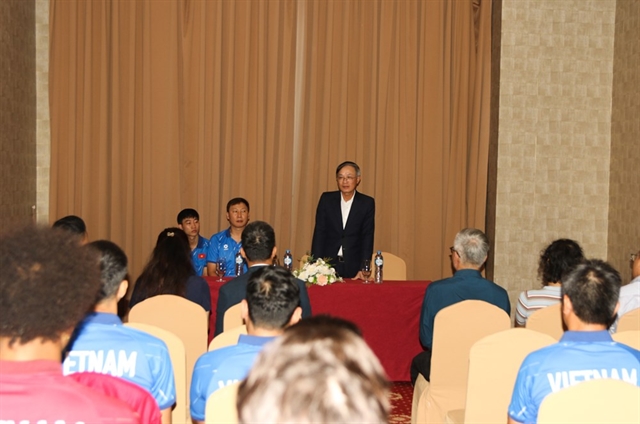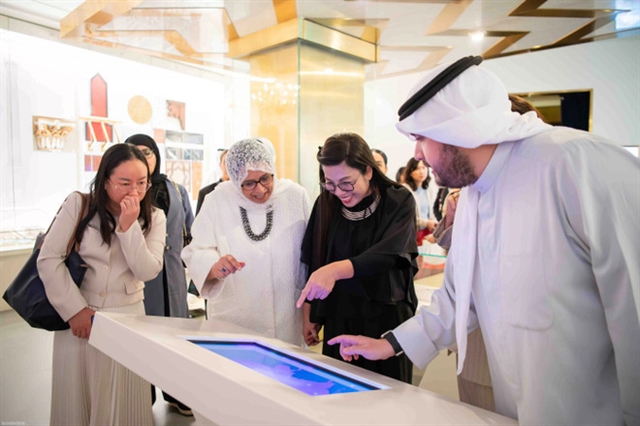 Society
Society

 |
| Trần Đông A speaks at a seminar on organ transplants. — VNA/VNS Photo |
Đinh Thị Hằng
HCM CITY — Half a century after the end of the war with the US, the story of Professor Trần Đông A stands as a testament to the resilience and dedication of those who chose to stay and rebuild the nation.
A former military doctor for the South Vietnamese regime, Đông A remained in Việt Nam after the war and became a pioneering figure in paediatric surgery, most notably leading the historic separation of conjoined twins Việt and Đức in 1988.
Born in 1941 in northern Việt Nam, Đông A was the fifth child in a family deeply rooted in anti-colonial resistance. His father sent him to the then Sài Gòn (now Hồ Chí Minh City) in 1952 during the First Indochina War to shield him from escalating violence.
Đông A excelled academically, eventually pursuing medicine at the Medical University of Sài Gòn. After graduation, he was drafted into the South Vietnamese army as a military doctor and served in field hospitals.
Amid the chaos, he quietly treated wounded soldiers from both sides, defying orders to prioritise Southern troops.
"To me, a life was a life. My oath was to humanity, not ideology,” he said.
On April 30, 1975, he stood among thousands in Sài Gòn, witnessing the fall of the southern government.
"I saw the liberation flag rise over Independence Palace. Tears of joy filled my eyes," he recalled.
Like many affiliated with the former regime, he was sent to a re-education camp for more than two years, a period he described as necessary for understanding the way of life under the new regime.
Six months after he was released from the camp, his medical expertise earned him an appointment as Head of Paediatrics at HCM City’s Children’s Hospital 2, and several years later as Deputy Director.
In 1981, Đông A faced a life-altering choice. His family was selected for a US resettlement programme, a rare opportunity during Việt Nam’s post-war economic difficulty. Yet he declined, despite pressure from relatives.
"Some people said I was a fool for making such a decision," said Đông A. "But my patients here were children born with deformities. How could I abandon them?"
By the late 1980s, he introduced many advanced surgical techniques adapted from developed countries to Việt Nam. His crowning achievement came in 1988, when he led a 17-hour surgery to separate conjoined twins Việt and Đức, whose conditions stumped international experts.
The success was enshrined in the Guinness World Records in 1991.
As a professor at HCM City's University of Medicine and Pharmacy, he trained generations of surgeons. Even in his 70s, he mentored teams during high-stakes operations, including the 2019 separation of twins Trúc Nhi and Diệu Nhi.
"I am happy that over 32 years, I have had the honour to participate in two highly complex separations like Việt-Đức and Trúc Nhi-Diệu Nhi," said Đông A.
Đông A's reputation as a healer propelled him into politics. Elected to Việt Nam’s National Assembly in 2002 and 2007, he championed laws addressing public health issues, notably the Law on Prevention and Control of Infectious Diseases and the Law on Donation, Removal and Transplantation of Human Tissues and Organs.
He was also inducted into the New York Academy of Sciences in 1992 and honoured as a Labour Hero in 2008.
"He laid the foundation and became the pioneer of paediatric surgery in Việt Nam. He was a true teacher — devoted to his students, passionate about his work and relentless in exploring new, cost-effective treatments to save lives," said Phạm Ngọc Thạch, Deputy Director of HCM City’s Children’s Hospital 2.
As Việt Nam celebrates 50 years of Liberation of the South and National Reunification (April 30, 1975 - 2025), Đông A's story resonates beyond medicine. His ability to transcend wartime divides and earn respect from former adversaries mirrors the nation’s complex path to reconciliation. — VNS




